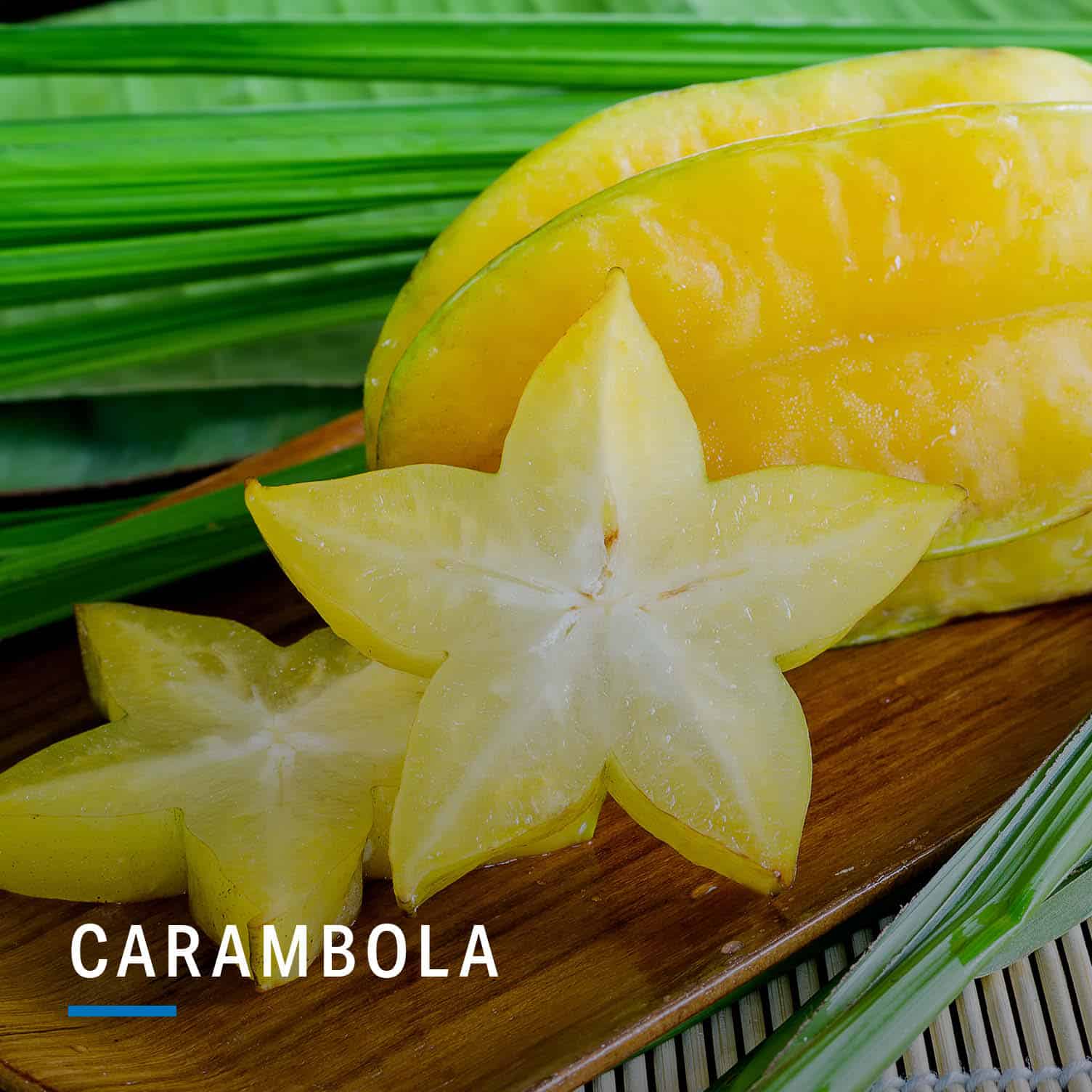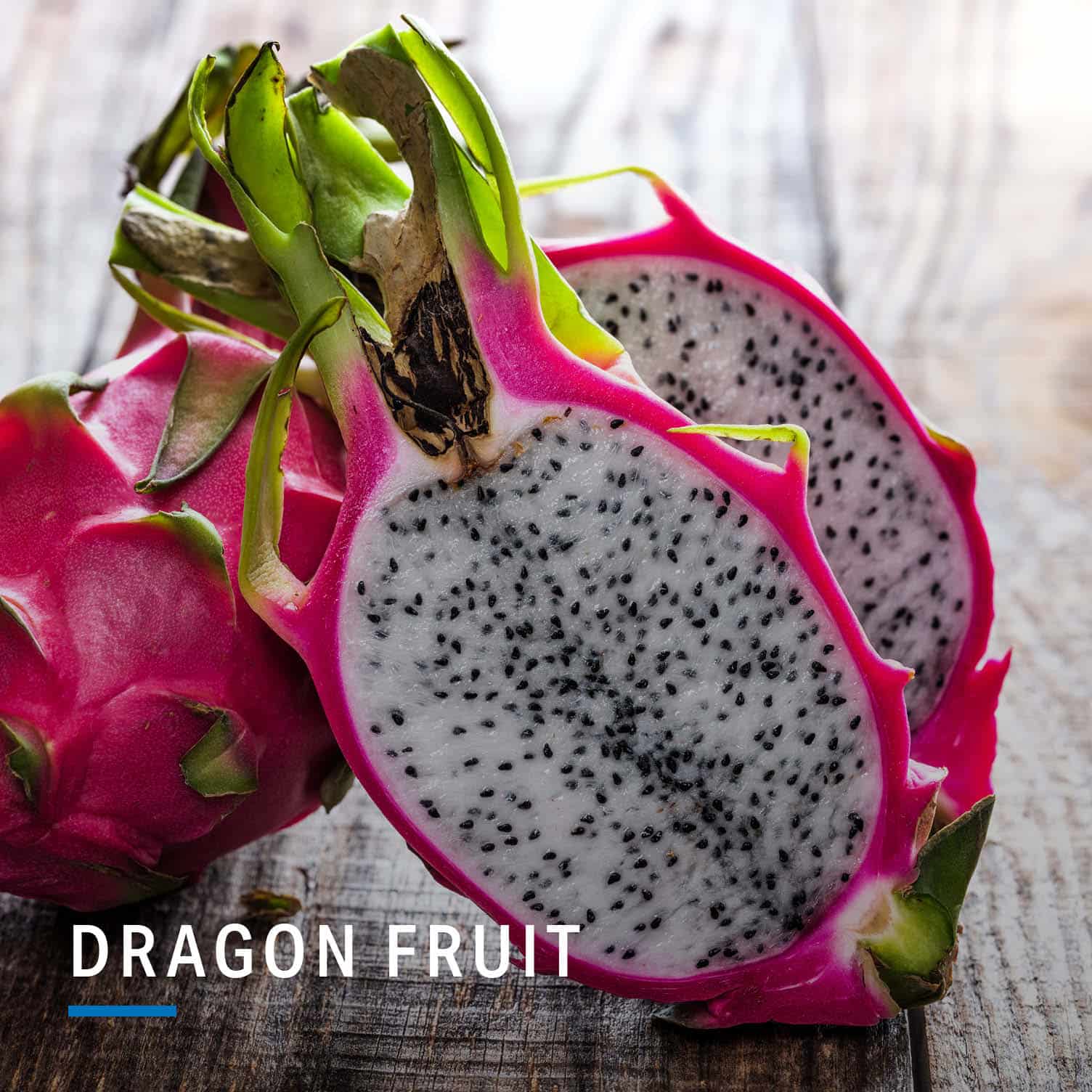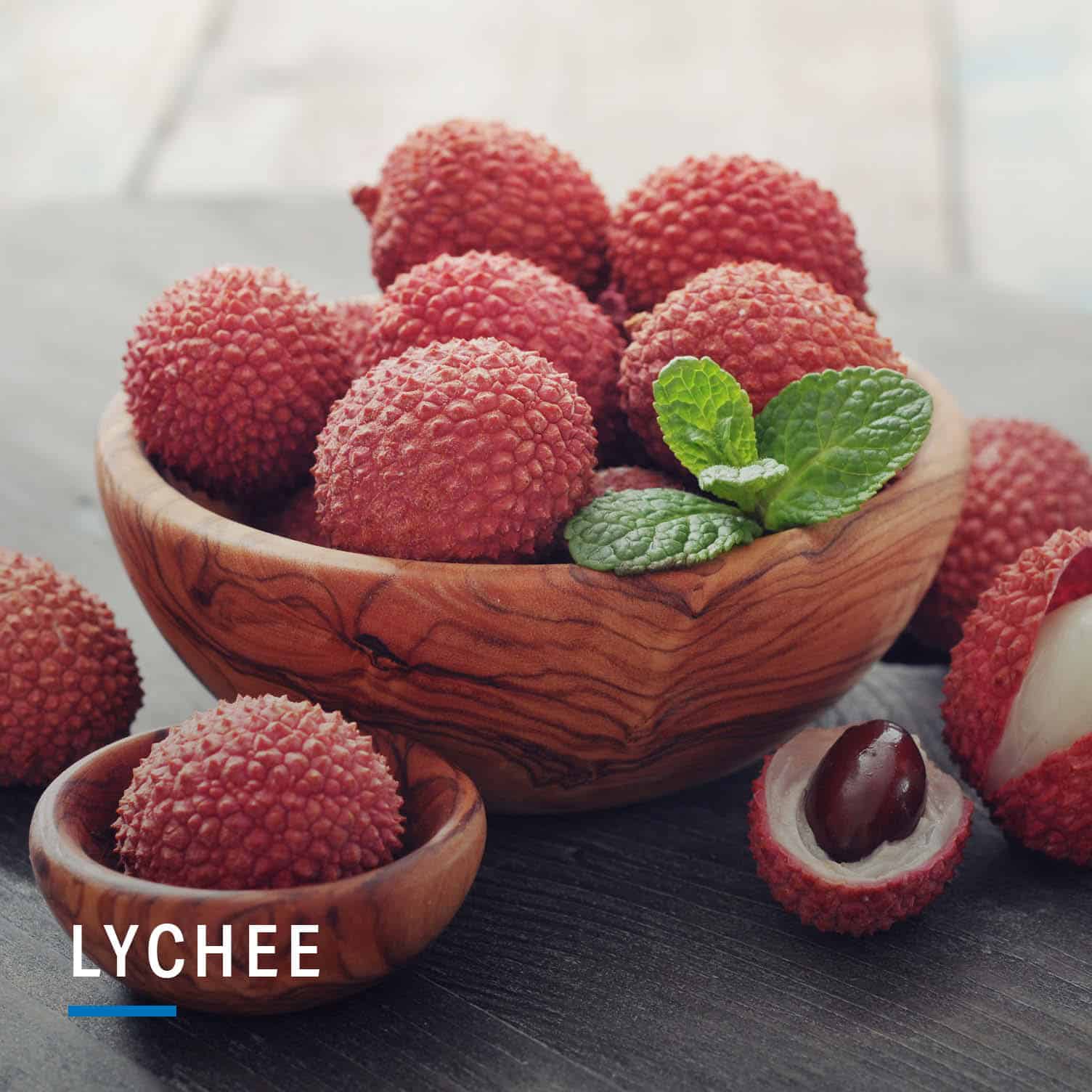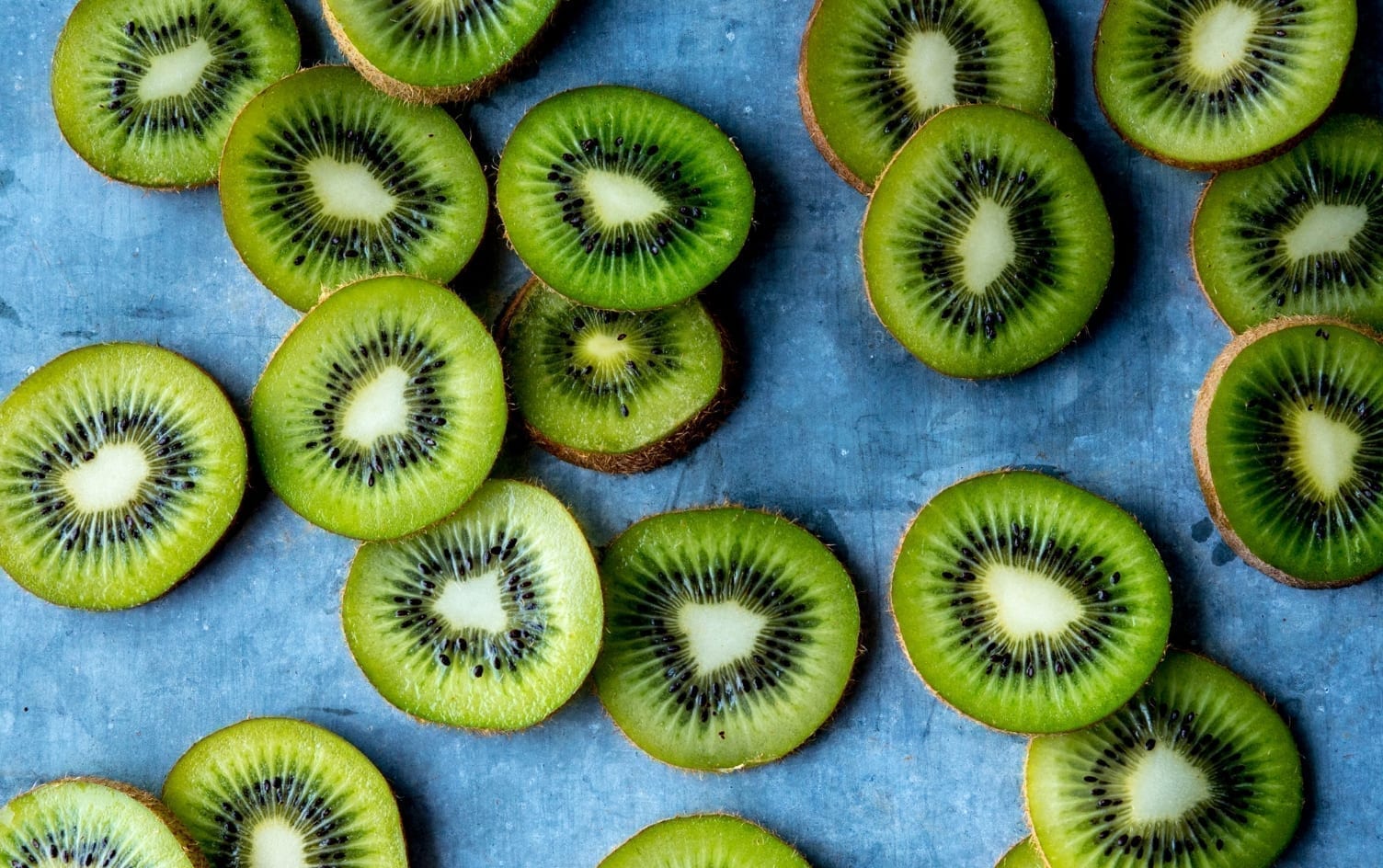You don’t have to fly to an exotic beach to get a taste of the tropics — some of the most delectable fruits from faraway places are increasingly available at your local grocery store or farmers market. While it’s always important to prioritize what’s in-season, you can occasionally splurge for more unusual fruits. After all, incorporating new options into your diet is a great way to enjoy a healthy snack or add more flavor to staples like oatmeal, smoothies or salads.
Here, six exotic fruits to try and tips for selecting and preparing them:

Origin: Often called star fruit for its star-like shape, this fruit is native to southeast Asia, but is grown in parts of South America, Hawaii, Florida and Australia. To tell if it’s ripe, it should be mostly yellow — pick one that only has a tiny bit of green and little-to-no brown spots.
Nutrition benefits: It’s rich in vitamin C, fiber and antioxidants.
Preparation: Carambola can be eaten like an apple, simply wash the skin well and take a bite. It can also be prepared for a more impressive presentation: trim the edges of each section by slicing the “points” lengthwise with a knife, then slice crosswise for Instagram-worthy star shapes that would go well on top of yogurt or as a garnish for a lighter cocktail.

Origin: Native to Mexico and Central America, dragon fruit comes in a variety of colors: bright pink with white flesh, yellow with white flesh and pink with deep pink flesh. Also known as pitaya, the striking, scale-like skin covers flesh that has a texture similar to kiwi, but with a subtler flavor.
Nutrition benefits: Low in calories and high in fiber, dragon fruit also contains a significant amount of magnesium, which regulates blood pressure and insulin levels.
Preparation: Simply cut the fruit in half and scoop out the flesh or peel off the skin completely and slice or dice it. Enjoy it on its own or in this pink cookie dragon fruit smoothie bowl.

Origin: You’re probably familiar with this common variety, which looks like a fuzzy brown egg with green flesh and is native to northeastern China. You should also keep an eye out for gold kiwi, which has smoother skin.
Nutrition benefits: Both types are rich in vitamin C and K, and have a high water content, making them refreshing and hydrating.
Preparation: When choosing kiwi, pick one that is firm with a little bit of give (a very firm kiwi means its not ripe, and a softer fruit might mean it’s overripe). Peel off the outer skin with a knife or vegetable peeler, and slice to desired thickness or cut into chunks. The colorful flesh makes a beautiful addition to fruit salad, salsa or as a topping for acai or oatmeal bowls.

Origin: Lychee (sometimes spelled litchi or lichee) is native to China, but also grows in India, Southeast Asia, Hawaii and South Africa.
Nutrition benefits: Lychee is rich in vitamins B and C.
Preparation: The hue of the lychee skin can help you determine its ripeness; it should be some shade of red but it’s safe to say once it’s been harvested for sale at a market, it’s probably ready to eat. Just peel off the rough outer skin to reveal the tender, white flesh underneath and eat it as you would a cherry (being mindful of the pit).

Origin: Sometimes called pawpaw, the papaya is native to Mexico and South America, but is now cultivated all over the tropics. Green papaya is used in some savory southeast Asian dishes (like Thai green papaya salad), but the ripe fruit with reddish-orange flesh is sweet.
Nutrition benefits: High in vitamin C and low in calories, papaya can be a great addition to breakfast or as a snack, served simply with a squeeze of lemon.
Preparation: Slice the papaya lengthwise, scrape out the seeds, then either scoop out the flesh with a spoon, or peel and cut into chunks or slices. Similar to kiwi, papaya is delicious in a smoothie, fruit salad or as part of a pico de gallo-style salsa.

Origin: Passion fruit is native to southern Brazil, Paraguay and Argentina, but is currently cultivated across the tropics and in California and Israel. The most common variety is purple on the outside with a yellowish pulp surrounding edible seeds. Its flavor is comparable to guava, with some acidity.
Nutrition benefits: It’s low in calories and high in fiber, potassium and magnesium. It also makes a great nighttime snack since it can help produce melatonin.
Preparation: When buying passion fruit, pick one that feels a bit heavy and has no soft spots. Cut through the outer skin, scoop out the pulp and enjoy it straight from the shell. The pulp can also be used to top yogurt, smoothie bowls or even in desserts like cheesecake or panna cotta.




